Since the Kia Sedona and Toyota Sienna have both been updated for the 2015 model year, car magazines have been conducting minivan comparison tests. In one of these the finishing order was Kia, Honda, Toyota. In another it was the opposite: Toyota, Honda, Kia. Yet another comparison placed the Honda first. How does this happen? Partly because different versions of the Toyota were tested. And partly because impressions of the Kia varied. But criteria and how they were weighted also varied. Depending on your priorities, any of the three could be the best minivan for you.
So, what might make the Toyota Sienna the one you'll prefer?
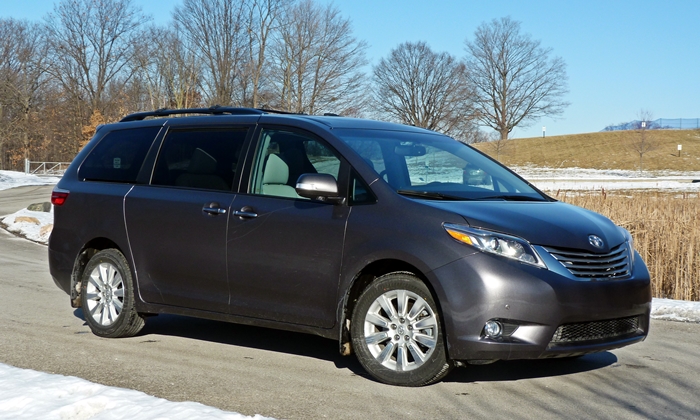
A quietly handsome van. more Sienna photos
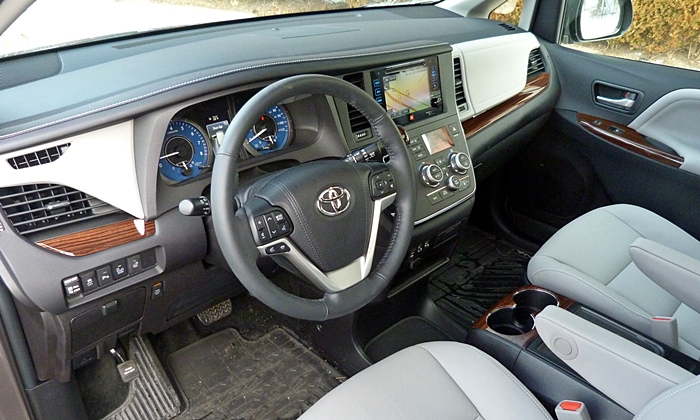
I didn't care for the hunk of white plastic on the otherwise dark instrument panel.
| |
Compared to the Sedona |
| Quietness |
 Better
Worse
Better
Worse
|
The Sienna's clearest advantage over the Sedona and Odyssey is in interior quietness. The Toyota is significantly quieter than the other two, especially at highway speeds.
| Ride smoothness |
 Better
Worse
Better
Worse
|
The Sienna also has the smoothest ride--unless you opt for the SE, as tested by the magazine that placed it third. Toyota has styled and tuned the SE to appeal to people seeking a sporty minivan. But reviewers have found that the SE's suspension tuning harms ride quality much more than it benefits handling. And if car enthusiasts aren't won over by the SE, it's hard to imagine who will be.
I tested the all-wheel-drive Sienna Limited. Since the driveshaft displaces the spare tire, the AWD Sienna is shod with run-flat tires, which often clomp stiffly over bumps. But even when so hobbled the Sienna still rides more smoothly than the others.
The run-flat tires have another weakness: many Sienna AWD owners report having to replace them far sooner than they expected to. They don't wear well.
For the smoothest ride and reasonable tire life, get the Sienna with front-wheel drive. Or get the AWD and, after the run-flats wear out, replace them with regular tires (and keep your AAA card handy in case of a flat).
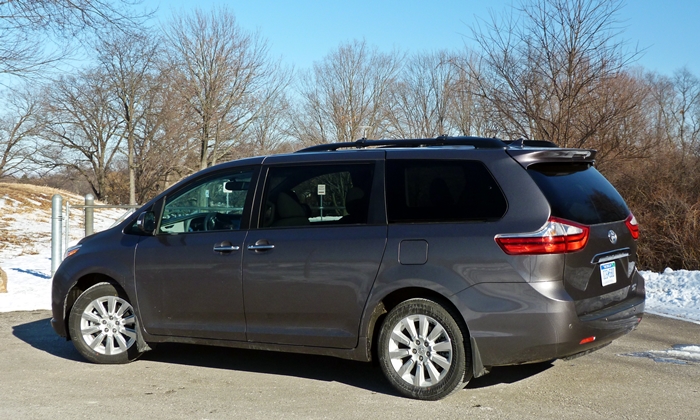
Toyota Sienna: it's a van.
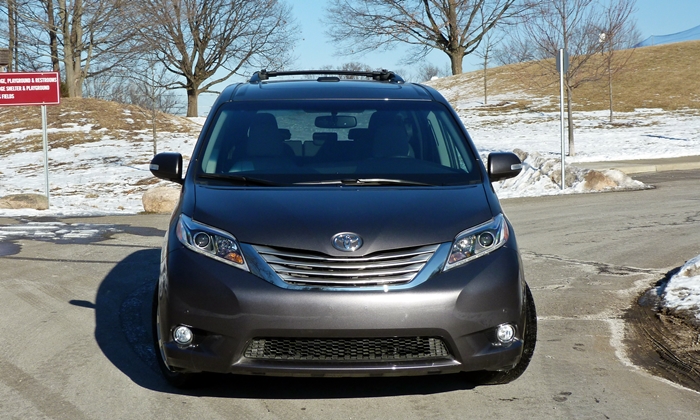
The Sienna's face is much less bold than the Sedona's.
| Feature availability |
 Better
Worse
Better
Worse
|
Minivans can be loaded up with more features than any other vehicle type. Most trim levels of the Sienna, Sedona, and Odyssey come with two power sliding doors and a power tailgate.
Still, the Toyota Sienna offers one major feature no other minivan does: all-wheel drive. If you want an all-wheel-drive minivan, you have no alternative.
Beyond the drivetrain, you can get far more features on the Sienna than you can on the Odyssey, including legrests on the second-row seats, power-folding third-row seats, a sunroof over the second row, power flip-out rearmost side windows, adaptive cruise control, auto-dimming headlights, rain-sensing wipers, and a heated steering wheel. Similarly load up a Sienna and an Odyssey, and the Toyota ends up with over $2,000 in additional content.
Against the Sedona, the picture is more mixed, with each van's unique features (the Kia offers cooled front seats and an around-view camera system, but no double-wide overhead entertainment system display or power-folding third row) largely canceling each other out.
Unfortunately, you cannot get all of the Sienna's available features with all-wheel drive. Eight-passenger seating, lounge-style second-row seats with legrests, the power-folding third-row seat, and adaptive cruise control are only available with front-wheel drive.
| Cargo capacity |
 Better
Worse
Better
Worse
|
Like the Honda Odyssey, the Toyota Sienna can hold more cargo than the Kia Sedona and far more than any crossover. Maximum cargo volume is 150 cubic feet, vs. 149 in the Odyssey, 142 in the Sedona, and at most 116 in a crossover. To get this much space in the Sienna or the Odyssey, the second-row seats must be removed, which is a bit of a chore. But you can get over 100 cubic feet by just pushing these seats all the way forward.
If you want to be able to transport three rows of people with their luggage, there really isn't an alternative to a minivan aside from the largest SUVs. A deep well bumps cargo volume behind the Sienna's third-row seat over 39 cubic feet, versus about 38 in the Odyssey, 34 in the Sedona, and at most 24 (usually much less) in a crossover.
| Front seat room |
 Better
Worse
Better
Worse
|
The Sienna's seats are cushier than those in the Odyssey or the Sedona. But I slightly preferred the Sedona's front seats because they had four-way lumbar (rather than two-way) and provided more lateral support.
The Toyota earns a clear win in front seat space. The first-row foot wells are unusually wide, and there's no tall center console (as in the Kia) or a protruding center stack (as in the Honda) to crowd the driver's right elbow or knee. This said, a relatively tall instrument panel does cut into the view forward and contribute to the Sienna feeling larger than the others.
| |
Compared to the Sedona |
| Interior styling |
 Better
Worse
Better
Worse
|
Toyota has fully redesigned the Sienna's instrument panel for 2015. The new control layout is more straightforward and includes larger buttons and knobs than you'll find in competing minivans. Additional soft-touch materials largely eliminate the plasticky ambiance of the 2011-2014 Sienna. But these materials have been added in Toyota's typically artless way. The stitched and padded instrument panel brow appears tacked on. The light gray hard plastic triangle to the left of the instruments constitutes an eyesore. The Kia Sedona's more artfully styled interior is much easier on the eyes.
| Handling |
 Better
Worse
Better
Worse
|
Though actually a little lighter than the Odyssey and the Sedona, the Sienna feels larger and more massive. Blame suspension tuning and a relatively tall instrument panel. The steering feels overly light and somewhat non-linear. The Sedona has firmer steering, while the somewhat lower Odyssey arguably drives the most like a car. These differences notwithstanding, the Sienna is very pleasant to drive. Just don't expect it to feel sporty--or let the pursuit of sportiness steer you into the much-criticized "sport-tuned" SE.
The Sienna does have one handling advantage. On slippery surfaces, the available all-wheel-drive system can make the Sienna more stable than the others. The Toyota managed a foot of fresh snow without issue during my week with it.
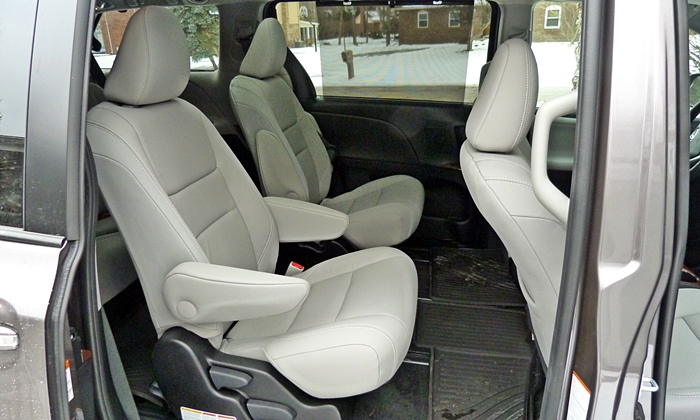
The cushy, comfortably high second-row seats lose their legrests when all-wheel-drive is added.
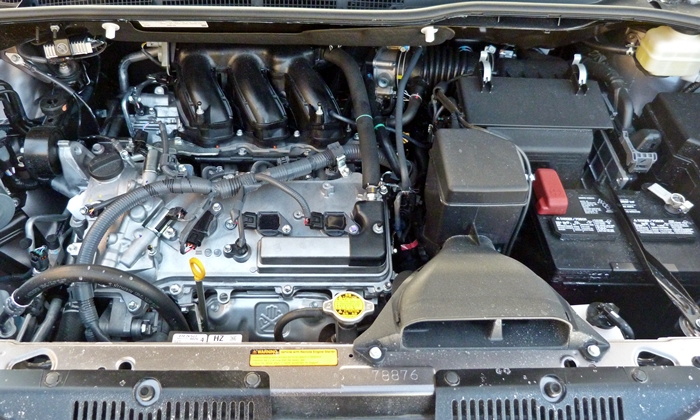
Strong, smooth V6 and 6-speed automatic.
| |
Compared to the Sedona |
| Exterior styling |
 Better
Worse
Better
Worse
|
The Sienna has one of Toyota's most cleanly styled exteriors. It's quietly handsome. Honda took much more of a risk with the Odyssey's exterior, and many people don't care for the result. Kia splits the difference, with a bolder exterior than the Sienna's that is, in my view, the most attractive of the bunch.
| Powertrain performance |
 Better
Worse
Better
Worse
|
Toyota has been using the same engine in the Sienna since 2007: a 266-horsepower 3.5-liter V6. Since 2011 this engine has been hitched to a manually shiftable six-speed automatic transmission. This team excels at smooth, nearly effortless acceleration. If you feel the need for more speed, you probably want something other than a minivan.
| Fuel economy |
 Better
Worse
Better
Worse
|
The optional all-wheel-drive system knocks the EPA fuel economy ratings down from 18 mpg city, 25 mpg highway (a bit better than the Sedona's 18/24, worse than the Odyssey's 19/28) to 16/23. In my real-world sub-freezing suburban driving, the Sienna with AWD roughly matched the Sedona without it. A few times I nudged the average over 20 mpg, but 16 to 18 was more common. In slightly warmer weather the Odyssey managed averages in the low 20s, and up to 25.
| Rear seat room & comfort |
 Better
Worse
Better
Worse
|
There's not as much legroom in the rearward rows of the Sienna as in the Odyssey, but the Toyota does have the cushiest seats in the threesome.
| Price or payments |
 Better
Worse
Better
Worse
|
Check off many boxes on the Toyota Sienna's option sheet, and you can easily bump the sticker price over $40,000. The tested Limited, which lacked the entertainment system but had a few dealer-installed accessories (remote start, mud guards, roof rack crossbars, all-weather floormats that got in the way when moving the seats around), listed for $44,953. These aren't cheap vehicles. But the Honda Odyssey is about as expensive, while including significantly fewer features. The Kia Sedona roughly matches the Sienna's level of content, but for about $4,000 less.
The Toyota has some clear advantages over the Sedona and the Odyssey. It's the smoothest and quietest minivan. Along with the Odyssey, it also leads the others in cargo space and reliability. Plus it's the only minivan available with all-wheel drive. If any (or all) of these things matter more to you than bold styling, somewhat sporty handling, or maximizing rear seat legroom, then the Sienna should top your personal ranking.
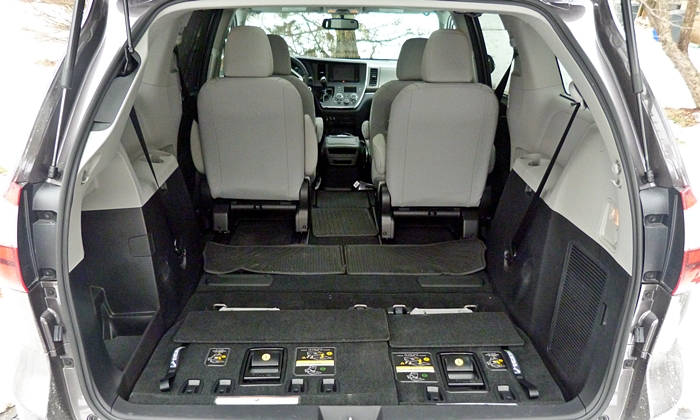
The third-row seat stows to yield a flat floor.
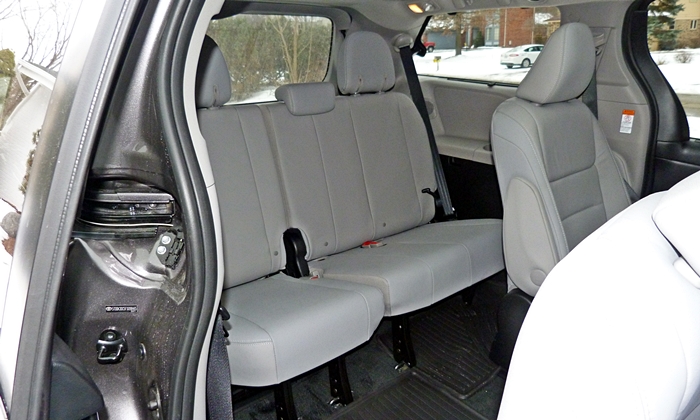
A couple of adults can sit comfortable in the third row. As in other minivans, three would be tight.
See more 2015 Toyota Sienna photos
Toyota, Kia, and Honda all provided insured, fueled vehicles for a week.











